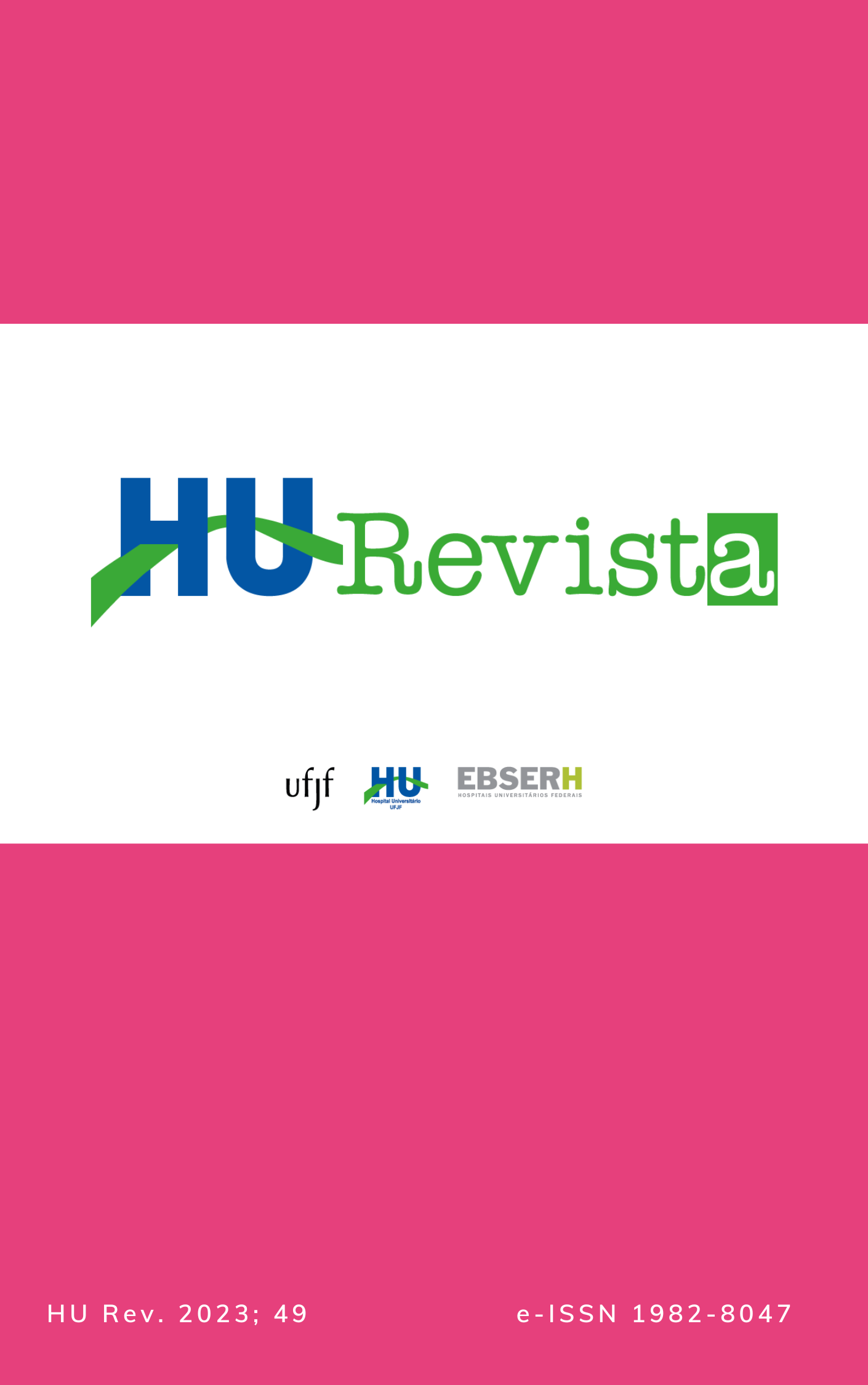Sudden Infant Death Syndrome: Scientific Evidence Underlying Current Recommendations
DOI:
https://doi.org/10.34019/1982-8047.2023.v49.41822Keywords:
Morte Súbita do Lactente, Cuidado da Criança, Sono, RevisãoAbstract
Background: Sudden Infant Death Syndrome (SIDS), defined as the unexpected death of a child under one year of age during sleep, of unexplained cause even after autopsy, is a condition with known and mostly modifiable risk factors. Objective: To highlight the scientific evidence on which the recommendations of the American Academy of Pediatrics and the Brazilian Society of Pediatrics for SIDS prevention are based. Methods: Literature review based on the societies' recommendations for SIDS prevention, searching for evidence that supports each recommendation. Results: The recommendations for SIDS prevention include placing the infant in a supine position for sleep; using a firm, flat, and non-inclined sleep surface; breastfeeding for as long as possible; room-sharing with parents for the first six months of life; keeping the crib free from soft objects; offering a pacifier during sleep; avoiding exposure to smoking; not using cardiorespiratory monitors. For all these recommendations, scientific evidence was presented, predominantly from case-control studies. Conclusion: The recommendations for SIDS prevention are based on sufficient scientific evidence, and healthcare professionals who care for young children and their families need to stay updated and attentive to them, actively promoting sleep safety.
Downloads
References
Krous HF, Beckwith JB, Byard RW, Rognum TO, Bajanowski T, Corey T et al. Sudden infant death syndrome and unclassified sudden infant deaths: a definitional and diagnostic approach. Pediatrics. 2004; 114(1):234-8.
Psaila K, Foster JP, Pulbrook N, Je ery HE. Infant pacifiers for reduction in risk of sudden infant death syndrome. Cochrane database of systematic reviews. 2017; 4:CD011147.
Sociedade Brasileira de Pediatria. Departamento Científico de Medicina do Sono. Síndrome da morte súbita do lactente. 2018; 4:1-10.
Woida FM, Saggioro FP, Ferro MA, Peres LC. Sudden infant death syndrome in Brazil: fact or fancy? Sao Paulo Med J. 2008; 126(1):48-51.
Nunes ML, Pinho APS, Aerts D, Sant’Anna A, Martins MP, Costa JC. Síndrome da morte súbita do lactente: aspectos clínicos de uma doença subdiagnosticada. J Pediatr. 2001; 77(1):29-34.
Moon RY, Carlin RF, Hand I, AAP Task Force on Sudden Infant Death Syndrome, AAP Committee on Fetus and Newborn. Sleep-related infantdeaths: updated 2022 recommendations for reducing infant deaths in the sleep environment. Pediatrics. 2022; 150(1):e2022057990.
Hauck FR, Herman SM, Donovan M, Iyasu S, Moore CM, Donoghue E et al. Sleep environment and the risk of sudden infant death syndrome in an urban population: the Chicago infant mortality study. Pediatrics. 2003; 111(5 Pt 2):1207-14.
Li DK, Petitti DB, Willinger M, McMahon R, Odouli R, Vu H et al. Infant sleeping position and the risk of sudden infant death syndrome in California, 1997–2000. Am J Epidemiol. 2003; 157(5):446-455.
Mannen EM, Carroll J, Bumpass DB, Rabenhorst B, Whitaker B, Wang J. Biomechanical analysis of inclined sleep products. Little Rock, AR: University of Arkansas; 2019.
Kemp JS, Nelson VE, Thach BT. Physical properties of bedding that may increase risk of sudden infant death syndrome in prone-sleeping infants. Pediatr Res. 1994; 36(1 Pt 1):7-11.
Cote A, Bairam A, Deschenes M, Hatzakis G. Sudden infant deaths in sitting devices. Arch Dis Child. 2008; 93(5):384-9.
Cerar LK, Scirica CV, Gantar IS, Osredkar D, Neubauer D, Kinane TB. A comparison of respiratory patterns in healthy term infants placed in car safety seats and beds. Pediatrics. 2009; 124(3):e396-e402.
Vennemann MM, Bajanowski T, Brinkmann B, Jorch G, Yucesan K, Sauerland C et al. Does breastfeeding reduce the risk of sudden infant death syndrome? Pediatrics. 2009; 123(3):e406-e410.
Hauck FR, Thompson JM, Tanabe KO, Moon RY, Vennemann MM. Breastfeeding and reduced risk of sudden infant death syndrome: a meta-analysis. Pediatrics. 2011; 128(1):103-10.
Carpenter RG, Irgens LM, Blair PS, England PD, Fleming P, Huber J et al. Sudden unexplained infant death in 20 regions in Europe: case control study. Lancet. 2004; 363(9404):185-91.
Tappin D, Ecob R, Brooke H. Bed sharing, room sharing, and sudden infant death syndrome in Scotland: a casecontrol study. J Pediatr. 2005; 147(1):32-7.
Ponsonby A-L, Dwyer T, Couper D, Cochrane J. Association between use of a quilt and sudden infant death syndrome: case-control study. BMJ. 1998; 316(7126):195-6.
Li DK, Willinger M, Petitti DB, Odouli R, Liu L, Hoffman HJ. Use of a dummy (pacifier) during sleep and risk of sudden infant death syndrome (SIDS): population-based case-control study. BMJ. 2006; 332(7532):18-22.
Sociedade Brasileira de Pediatria. Departamento Científico de Aleitamento Materno. Uso de chupeta em crianças amamentadas: prós e contras. 2017; 3:1-16.
Blair PS, Sidebotham P, Evason-Coombe C, Edmonds M, Heckstall-Smith EM, Fleming P. Hazardous cosleeping environments and risk factors amenable to change: case-control study of SIDS in south west England. BMJ. 2009; 339:b3666.
Downloads
Published
How to Cite
Issue
Section
License
Copyright (c) 2024 Sabrine Teixeira Ferraz Grunewald

This work is licensed under a Creative Commons Attribution 4.0 International License.
Cessão de Primeira Publicação à HU Revista
Os autores mantém todos os direitos autorais sobre a publicação, sem restrições, e concedem à HU Revista o direito de primeira publicação, com o trabalho licenciado sob a Licença Creative Commons Attribution que permite o compartilhamento irrestrito do trabalho, com reconhecimento da autoria e crédito pela citação de publicação inicial nesta revista, referenciando inclusive seu DOI.









